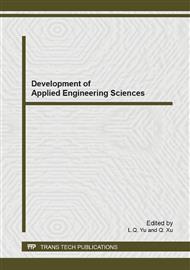p.345
p.349
p.353
p.357
p.363
p.369
p.373
p.378
p.383
Layout Optimization for Deformable Trimaran Based on BP Neural Network
Abstract:
A design layout optimization for deformable trimaran with the basis of DTMB5415 based on BP neural network is presented. With taking CFD software calculated results for its sample values, BP neural network can predict resistances of the unit displacement under different layout and speed through trained. From above, the best layout of the ship adjusted with the speed can be drawn on the basis of ensuring the calculation accuracy. Compared to traditional CFD method, BP neural network can not only greatly reduce the computational time but also search for the optimal layout corresponding to any speed quickly and reliably. CFD method limited the layout and speed to obtain the minimum resistance value, and BP neural network method broke this inherent mode above and it really play the “deformable” advantage. It can be better applied to engineering practice and provides a new idea for computer-aided layout optimization of triamran.
Info:
Periodical:
Pages:
363-368
Citation:
Online since:
October 2014
Authors:
Price:
Сopyright:
© 2014 Trans Tech Publications Ltd. All Rights Reserved
Share:
Citation:


